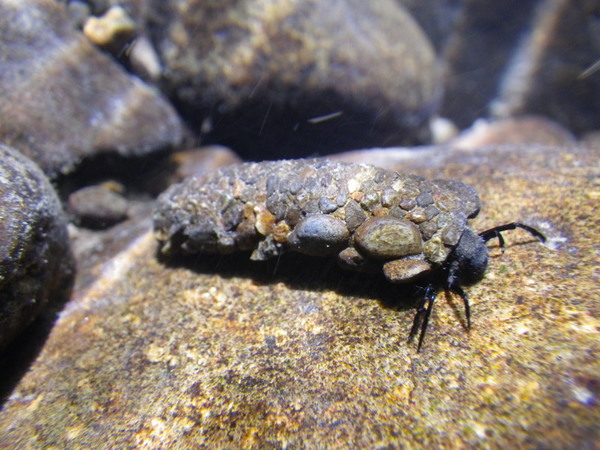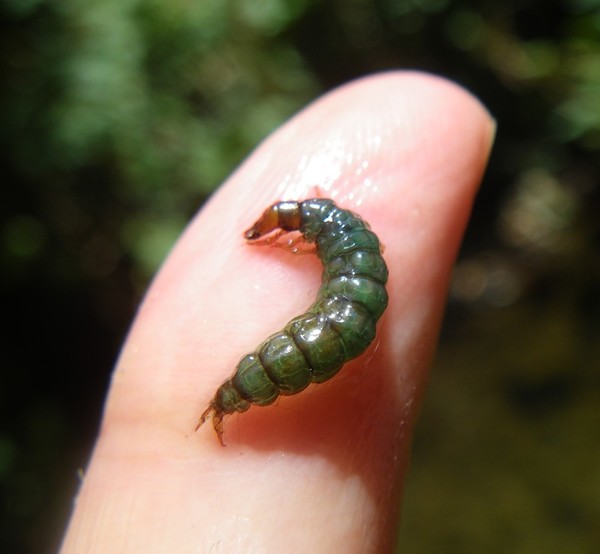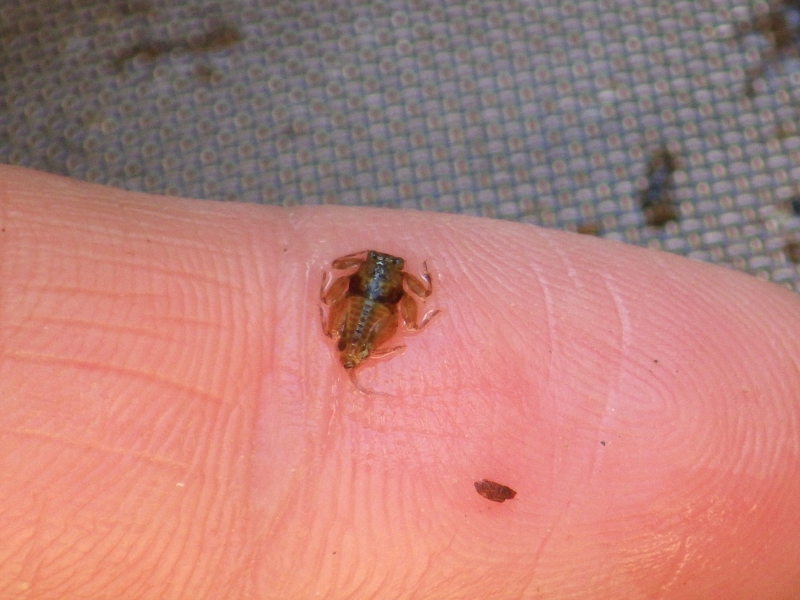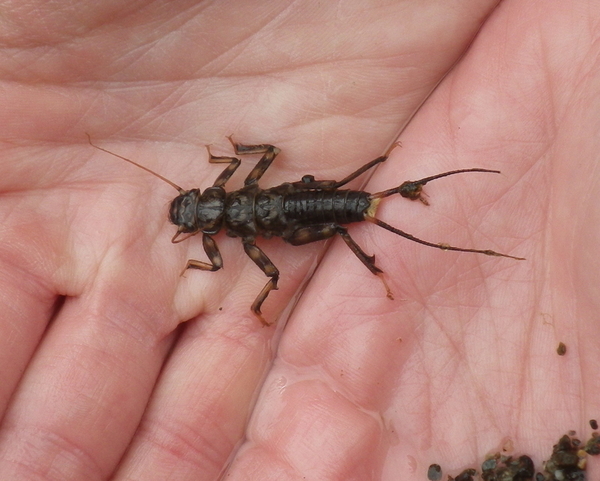What is the Benthic Index of Biotic Integrity?
General introduction
King County uses stream benthic macroinvertebrates ("stream bugs") to track stream health. It does so using the Puget Lowland Benthic Index of Biotic Integrity (B-IBI). The B-IBI is the sum of ten metrics. The metrics measure various aspects of benthic macroinvertebrate diversity and community structure. The aspects we measure are those that respond to water quality or habitat conditions.
Many of the metrics relate to taxa richness. Scientists call a single type of macroinvertebrate a taxon. The plural of taxon is taxa. Taxa richness means how many types of benthic macroinvertebrates are in a sample. Other metrics focus on certain kinds of taxa based on their habits and feeding methods. The ten metric scores combine to produce the B-IBI score, which ranges from a low of 0 to a high of 100. These ten metrics and the B-IBI score help us characterize the stream community. By collecting this data every year, we can see how the community changes over time. A changing B-IBI score and metrics tells us that stream conditions are changing.
King County manages a regional database of B-IBI scores and sample data. The Puget Sound Stream Benthos (PSSB) database stores data from across Washington state.




Metric descriptions
The following section provides general descriptions of the B-IBI metrics. Local scientists developed the metrics for lowland streams in the Pacific Northwest. More detailed descriptions are available on the PSSB web site.
Total taxa richness.
The number of different types of macroinvertebrates (taxa). The taxa richness of a stream declines as water and habitat quality degrades.
Mayfly (Ephemeroptera) taxa richness.
Many mayfly taxa cling to rocks and graze on algae. Mayfly richness declines in response to most types of human disturbance. Many types of mayflies are sensitive to chemical pollution and excessive fine sediment.
Stonefly (Plecoptera) taxa richness.
Stoneflies are often the first taxa to disappear from a stream as conditions degrade. Many stonefly taxa are predators that stalk their prey and hide around and between rocks. Hiding places between rocks disappear as sediment washes into a stream. Other stoneflies are shredders that feed on fallen leaves from overhanging trees. Most stoneflies need cool water temperatures and high levels of oxygen.
Caddisfly (Trichoptera) taxa richness.
Many caddisfly taxa build gravel or wood cases to protect themselves. Different caddisfly taxa feed in a variety of ways. Some spin nets to trap food, others collect food particles that settle between rocks. Still others scrape algae from rocks, and some others are predators. Though they are very diverse, caddisfly taxa richness declines as stream conditions degrade.
Intolerant taxa richness.
Benthic macroinvertebrates identified as intolerant are the most sensitive taxa. These represent approximately 15% of the rarest taxa present in the region. These organisms are the first to disappear from streams as human disturbance increases.
Clinger taxa richness.
Taxa defined as clingers can hold onto smooth substrates in fast water. These organisms live in the spaces between rocks and cobble along the bottom of the stream. They are particularly sensitive to fine sediments which can fill these spaces.
Long-lived (semi-voltine) taxa richness.
Most benthic macroinvertebrates in the Pacific Northwest live about one-year. But long-lived taxa need two or more years to complete their life cycle. Because of this, they are more vulnerable to less frequent disturbances like floods.
Percent tolerant.
Tolerant benthic macroinvertebrates are present at most stream sites. But as conditions degrade, tolerant taxa make up a larger percent of the organisms found. Tolerant benthic macroinvertebrates represent the 15% most common taxa in a region. In a sense, they occupy the opposite end of the spectrum from intolerant taxa.
Percent predator.
Predator taxa represent the peak of the food web. They depend on a reliable source of other benthic macroinvertebrates to eat. The percent of organisms that are predators tells us about the food web supported by a stream. Healthy streams support many kinds of prey items and diverse habitats in which to find them.
Percent dominance (3 taxa).
As diversity declines, a few taxa come to dominate the organisms present at a site. Taxa that are less picky about where they live replace taxa that have specific needs. Dominance is the sum of the three most abundant taxa divided by the total number of organisms in a sample.
B-IBI information
The Puget Sound Stream Benthos web site contains up to date B-IBI scores from across the state. The website stores macroinvertebrate data from regional monitoring programs. It allows for data sharing among many organizations. It also provides tools for calculating metrics and scores. The City of Seattle, King County, Pierce County, and Snohomish County created the site.
Other monitoring B-IBI monitoring programs
Stream biological monitoring from Washington State Department of Ecology.
Macroinvertebrate Sampling Program from the National Parks Service.
Invertebrates as Indicators from the EPA.

 Translate
Translate